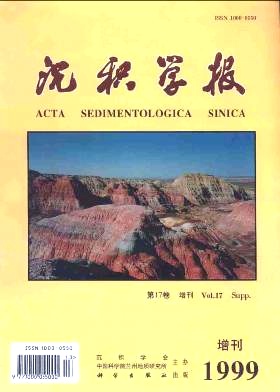The Discovery of Submerged Late-Pleistocene Beachrock on the Southern Margin of the East China Sea Continental Shel f and its Geological Significance
- Received Date: 1998-11-25
- Rev Recd Date: 1999-03-25
- Publish Date: 1999-12-10
-
Key words:
- the East China sea continental shelf /
- submerged beach-rock /
- ecological environment /
- late Ple-stoncene
Abstract: It is well known that beachrocks are the characteristic rock of tropics and subtropics beach. They are formed in special geomorphologic locations and sedimentary environment and are formed in special geomor-phologic locations and sedimentary environment and are considered as a kind of good sign to show facies and an important symbol to recover the ancient position of sea level. For this reason,geologists have been paying colse attention to beachrocks. Beachrocks formed in different period are distributed very extensively in the coastal areas and seabed of many islands as well as the southeastern coast of China,but most of them discovered during 1940s-1984s were post-late-Pleistocene beachrocks. The submerged beachrocks on seabed have not been discovered much.During the marine geological survey on the south margin of the East China Sea continental shelf in eary 1990s,a few big and integrted beachrock (olcated about 115m water depth) and bioclastics (between 110m and 241m water depth) samples were collected on the seabed at many places. It was considered that the collected rocks were only a small part of beachrock outcrops. Many beachrocks might be covered by residual sand and there should be an extensive distribution of submerged beach-rock and biiclastic limestone nearby the southern shelf break zone of the East China Sea,which needs further investigations and study in the future. Analysis shows the characters of beachrocks: (1) The rock is mainly composed of terrigenous fragment, bio-clamshell fragment and cement, the three kia}ds of components being not well-distributed.Clamshell content is about 25-45 percent and its composition is simple,mainly including Gastropods and lamellibranchic. The content of other organisms(Foraminifera,Al- gae,Hepatica,Spongy,Coral fragment,for instance) is not much. Terrigenous fragment takes up about 30-60 percent and their grains are proximate edge angle,proximate round or edge angle,main composition being quartz-Next is plagiochasite and k-feldspar etc.In ciment,calcite is the important composition,the next aragonite. Small amount of argillaceous cement is also in it. There are basemental cementation and sandy and silt structure. Especially the rock appears slightly stratified structure. The arrangement of shell fragment presents a bit of directivity,which suggests the trace of certain beach courses. According to the analysis,submerged beachrock is named and is the biolith formed in shore and beach environment. (2) Chemistry compositions:CAO holds 40.40 percent and SiO2 18.76 percent. This content arrangement of different compositions was chiefly caused by random distribution of organism and terrigenous composition during beach-action course and by different position for collecting samples. In addition,MgO content of beachrocks,as well as the difference among fragment composition, granulanity and psephicity of the rocks,can infer the difference of diagenetic environment. (3)ERA chemistry-composition measurement and XRD analysis of the cement indicated that the cement of the rock was mainly low-Mg-c alcite. The crystallizationdegree of the cement was higher. The measurement result of electronic probe of the cement was in accordance with the analysis of XRD. (4)The 14C dating result of the beachrocks is about 20000-21000 a B. C., which indicates that it is the deposit of shore envirnment at low sea level during the last glacial age of late Pleistocene,being to submerged beachrocks of late Pleistocene. In addition,it is considered that the formation and change of beachrocks would vary accompanying the occurrence of varied geologic events and time change in different areas and under the influence of circumstances and so on. Beachrocks in different morphologic positions also show various characters. It is much com- plicated to certificate it accurately and study its variation and differences.
| Citation: | SHEN Hao-jie, WANG Xian-lan. The Discovery of Submerged Late-Pleistocene Beachrock on the Southern Margin of the East China Sea Continental Shel f and its Geological Significance[J]. Acta Sedimentologica Sinica, 1999, 17(S1): 782-788. |






 DownLoad:
DownLoad: